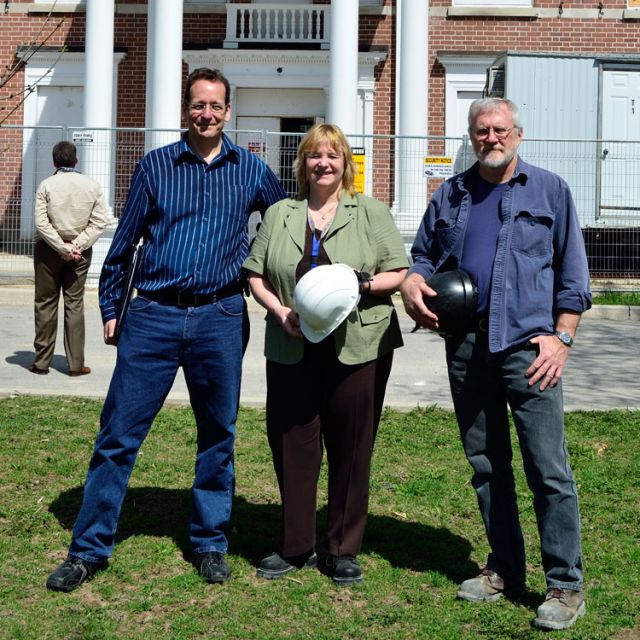Last year on May 9 a fire, believed to have been caused by welding equipment, ravaged much of the upper level of the house, setting the project’s completion date back by a year and adding an additional $1 million to the cost.
“We lost a lot of original material,” said Dan McNeil, senior project architect with Kearns Mancini Architects. “After the fire and the amount of water that was poured into the building it was virtually completely gutted. There was a lot of concern. It had seeped all sorts of toxic material down through the entire building.”
The project, which included the already completed restoration of the adjacent Coach House, had already exceeded its $4.2-million budget, leaving some wondering why continue.
“It would have been cheaper to put a whole new building in place there and to be honest there are probably some people who think that is exactly what we should have done,” said Susan Baker, Senator O’Connor’s principal.
The contractors were able to salvage the shell of the building, all of the millwork and fixtures along with the hardwood floor, said McNeil.
The school’s North York property originally belonged to Senator Frank O’Connor who, at death, left the entire 240-hectare estate to the Congregation of Christian Brothers, who established the high school on the property. The brothers continued to occupy the estate and coach houses — the only remaining heritage structures on the property along with an accompanying storage shed — until 2000.
“We owe a lot of the development in this area, the O’Connor area, to ... the Christian Brothers,” said Baker. “Our identity is linked with the O’Connor House. It’s what distinguishes us as a community.”
Initially the renovation of the heritage buildings was to be included in the construction of a new school, which opened in 2005. Funding however, was cut from the project’s budget and the restoration project was put on hold.
“Just prior to the start of construction and demolition of the old school the budget showed that it wasn’t going to be possible to include the heritage buildings as part of it so they were cut from the project,” said McNeil, who’s been working on the O’Connor site since 2001.
That’s when Mary Fay and her business services team at the school board stepped in to say “we need to preserve the buildings for the community’s sake,” said Baker.
Fay’s team, the O’Connor Irish Heritage House Committee, along with the school’s heritage committee, began seeking funds to give the restoration project a new foundation. Their combined efforts garnered funds from the federal government, the Ontario Trillium Foundation and the City of Toronto, which recently kicked in an additional $200,000.
While the Coach House is currently being used to facilitate drama classes, the Estate House will be a social gathering location used both by the school and the broader community.
“We don’t anticipate that it will be turned into classrooms with desks and chairs,” said Baker. “We see the house as a small gathering area.”
With the school’s 50th reunion set to take place on June 1 — it will be a fundraiser for the project — Baker said she’s hopeful those attending will get a chance to see inside the building, which she said “was forbidden fruit” to them as students. But with the memory of last year’s fire burned into her mind she spoke with caution in her voice.
“What we are hopeful of, we know delays happen all of the time, is that at least the former students can come in and get a tour of the place,” said Baker. “We are expecting over 1,000 people ... coming in from England, Amsterdam and other parts of Canada so it is really, really important. The building is very expensive to pay for and to sustain interest in it. Renewing the ties within our community are very important.”


